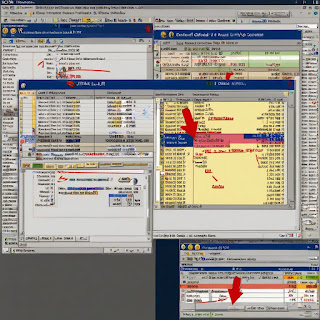Algorithmic Trading Strategies
Algorithmic trading strategies vary widely in complexity and approach, but some of the most popular and potentially effective ones include:
Mean Reversion:
- Assumes that prices will revert to their mean over time.
- Example: Buy when the price is significantly below the historical average and sell when it is above.
Momentum Trading:
- Based on the idea that assets that have performed well recently will continue to perform well in the near future.
- Example: Buy stocks making new 52-week highs and sell those making new 52-week lows.
Arbitrage:
- Exploits price differences between similar or identical assets in different markets.
- Example: Buy a stock on one exchange where it is undervalued and sell it on another where it is overvalued.
Trend Following:
- Capitalizes on the continuation of existing trends.
- Example: Use moving averages to identify and follow the direction of the trend.
Statistical Arbitrage:
- Uses statistical methods to identify mispricings between related financial instruments.
- Example: Pair trading, where two correlated stocks are traded when their prices diverge.
Machine Learning:
- Uses AI and machine learning algorithms to predict future price movements based on historical data.
- Example: Use neural networks or other models to analyze large datasets and make trading decisions.
No-Risk Trading
It's important to note that no trading strategy is without risk. Any claim of "no risk" is misleading. The goal is to minimize risk while maximizing returns. Proper risk management strategies include:
- Diversification
- Stop-loss orders
- Position sizing
- Hedging
Best Way to Create an Algorithmic Trading System
Language and Platform:
- MQL4/MQL5: Specifically designed for MetaTrader 4 and 5, widely used in Forex trading.
- Python: Versatile and widely used in quantitative finance for backtesting and deploying strategies using libraries like pandas, NumPy, TA-Lib, and backtrader.
- C++/Java: Used for high-frequency trading (HFT) due to their performance and speed.
- R: Useful for statistical analysis and building predictive models.
Backtesting and Simulation:
- QuantConnect: A cloud-based platform supporting multiple languages (C#, Python, F#).
- TradingView: Provides Pine Script for strategy development and backtesting.
- MetaTrader: Offers built-in backtesting features for MQL4/MQL5 scripts.
- Backtrader: A Python framework for backtesting and live trading.
Deployment:
- MetaTrader: Ideal for Forex and CFD trading with MQL4/MQL5 scripts.
- Interactive Brokers with IBPy: Integrates with Python for trading various asset classes.
- QuantConnect and Quantopian: Platforms for backtesting and deploying strategies.
Software and Platform Services
MetaTrader 4/5:
- Pros: Well-established, large community, extensive libraries of indicators and scripts.
- Cons: Primarily for Forex and CFDs, not as versatile for other asset classes.
QuantConnect:
- Pros: Supports multiple languages, cloud-based, extensive libraries.
- Cons: Requires knowledge of C# or Python, complex for beginners.
TradingView:
- Pros: User-friendly, Pine Script for easy scripting, extensive community support.
- Cons: Primarily for charting and backtesting, not for high-frequency trading.
Interactive Brokers:
- Pros: Wide range of asset classes, robust API support.
- Cons: More complex setup, requires integration with coding platforms like Python or Java.
Conclusion
- For Forex/CFD trading: MetaTrader 4/5 with MQL4/MQL5 is a solid choice due to its specialized tools and community support.
- For stock trading and advanced strategies: Python with libraries like backtrader and platforms like QuantConnect offers great flexibility and power.
- For ease of use and quick setup: TradingView with Pine Script is user-friendly and effective for strategy development and backtesting.
Ultimately, the best approach depends on your specific needs, coding skills, and the asset classes you wish to trade. Always start with thorough backtesting and proceed with caution in live trading to manage and mitigate risks.


Comments
Post a Comment